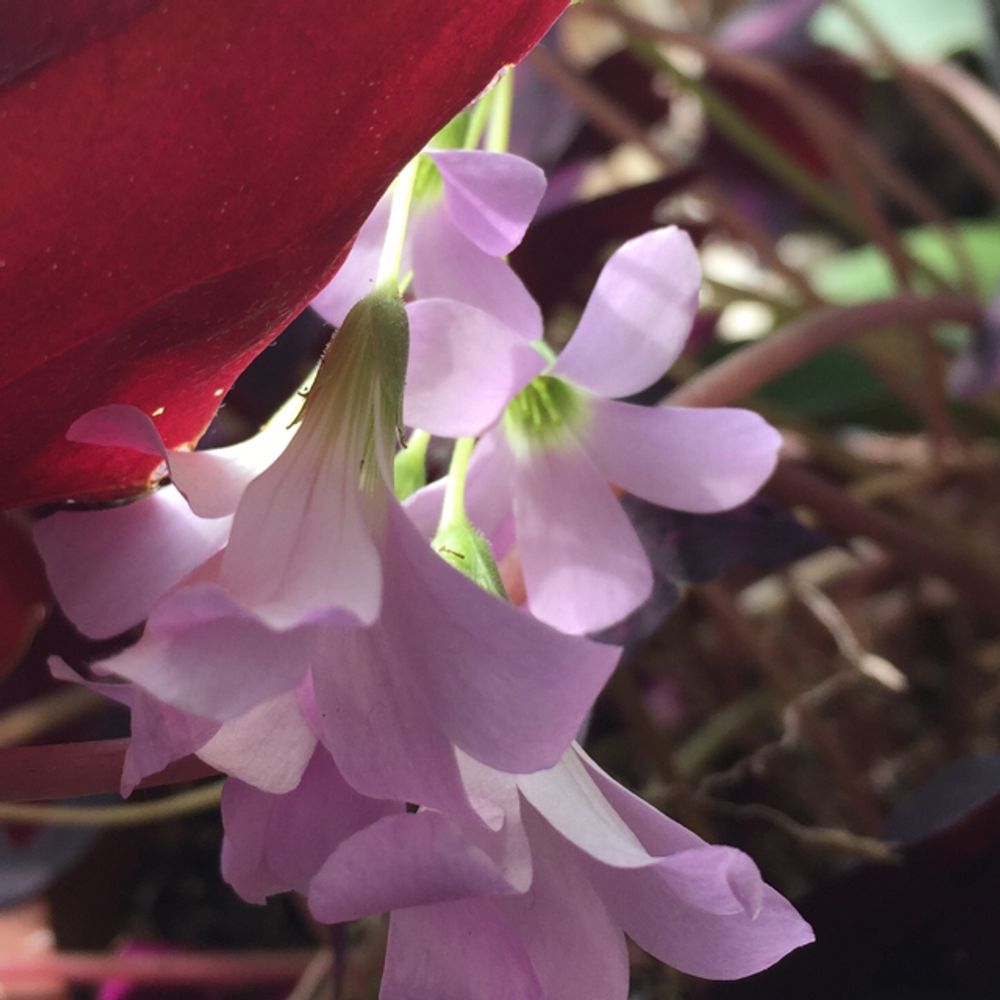Sorrel
(Oxalis triangularis papilionacea)

Description
Oxalis triangularis, commonly called false shamrock, is a species of edible perennial plant in the Oxalidaceae family. It is endemic to Brazil. This woodsorrel is typically grown as a houseplant but can be grown outside in USDA climate zones 8a–11, preferably in light shade. The deep maroon leaves are trifoliate, like species in the clover genus Trifolium which are commonly called shamrock, hence the name “false shamrock”. An interesting feature is that the leaves close like an umbrella at night (See the timelapse video below). The white or pale pink five-petalled flowers also close at night. Growing to 50 cm (20 in) tall and broad, the subspecies O. triangularis subsp. papilionacea, the purpleleaf false shamrock, is hardy in mild and coastal areas of Britain, down to −5 °C (23 °F), and has won the Royal Horticultural Society’s Award of Garden Merit. It is a perennial plant without aerial stem, formed by leaves borne by a long petiole emerging at the ground level of a tuberous rhizome (5 cm long, over 10 - 15 mm in diameter, fully covered with scales). The leaf is formed of three sessile leaflets (or very short petiole), obtriangular to obovate-triangular, glabrous, arranged in the same plane perpendicular to the petiole. The five densely haired sepals are 5 to 5.5 mm long, narrow and slightly reddish at the top. The five white petals are about 2 inches long and oblong-lanceolate. The stamens and the stylus are densely hairy.The mostly four to nine in undergraduate rosettes arranged leaves are divided into petiole and leaf blade. The limb of the wild species is green but purple cultivars have been selected for horticulture. The petiole , soft, whitish, is 15 to 25 cm long. Flowering takes place from spring to autumn. O. triangularis requires bright or direct sunlight supplemented with a cool indoor temperature of 15 degrees Celsius (60 degrees Fahrenheit). It can tolerate higher indoor temperatures but will go into dormancy prematurely and/or begin to take on a "tired" appearance if temperatures go above 27 degrees Celsius (80 degrees Fahrenheit) for prolonged periods of time. It thrives in an average potting soil with good drainage. Mature plants are cut back to the soil every 3–5 years in early summer or during the dormancy period. Young plants are cut back to the soil every year in early summer or during the dormancy period, until they reach maturity. Fearing frost, they are usually grown indoors. They are planted in soil rich in humus and well drained. In winter, they should not be watered. The leaves are eaten raw or cooked and have an acidic taste due to their oxalic acid content. Leaves and flowers can be used as a decoration for salads, when consuming larger amounts of leaves, the oxalic acid can cause discomfort. The rhizomes are eaten raw or cooked and have a sweet taste.
Taxonomic tree:







